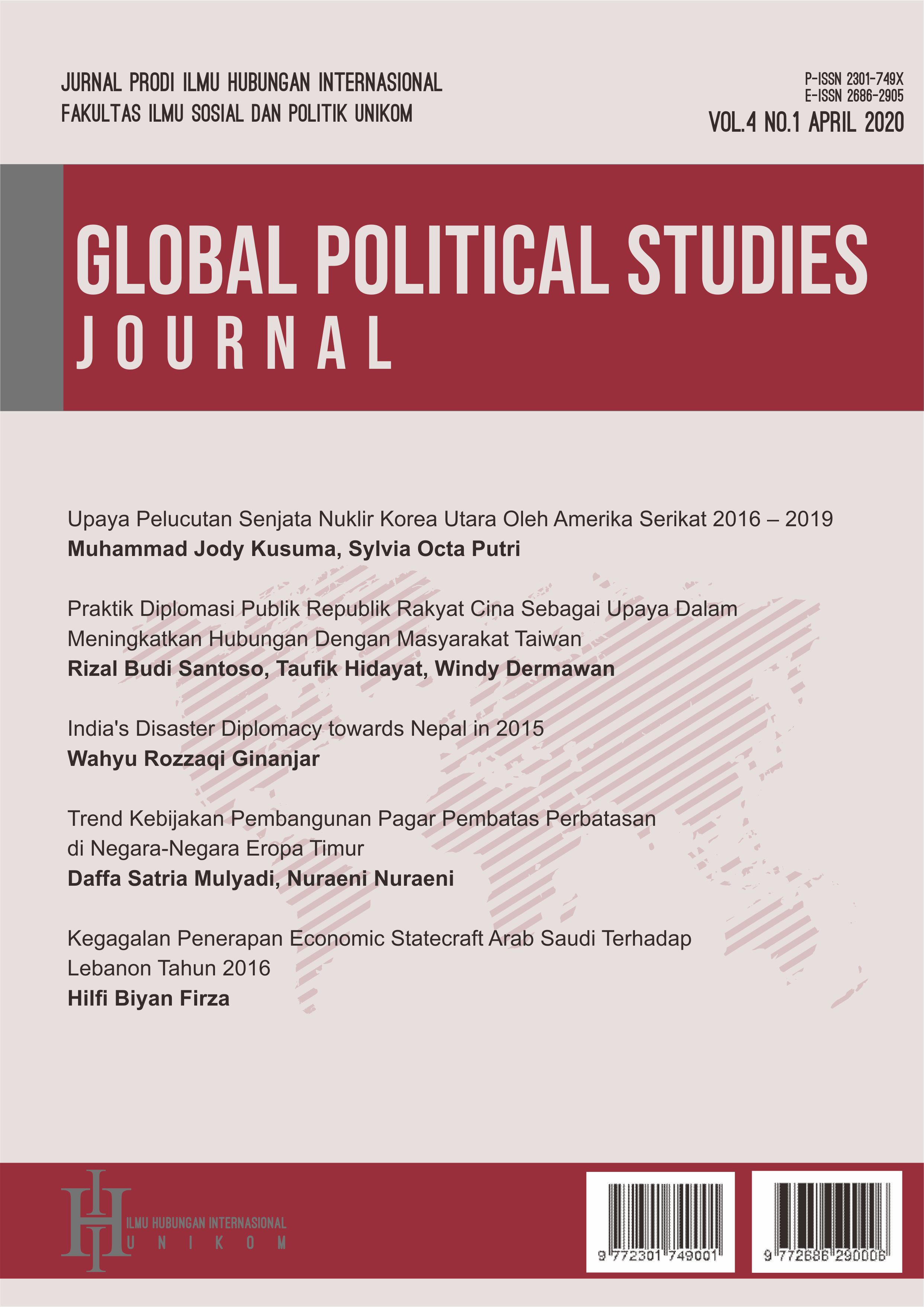Trend Kebijakan Pembangunan Pagar Pembatas Perbatasan di Negara-Negara Eropa Timur
DOI:
https://doi.org/10.34010/gpsjournal.v4i1.2908Abstract
The refugee crisis that took place within the European Union in 2015 has caused a lot of pressure on the bordering countries of the European Union due to the Dublin Regulation policy and the principle of sharing responsibilities that must be carried out by all EU countries. Unfortunately the countries that feel most disadvantaged are increasingly leaving the existing forms of policy, one of which is by choosing a policy of building the border fences in their border areas where refugees and asylum seekers usually pass. This article will look at how Eastern European countries such as Greece, Hungary and Bulgaria are carrying out a policy of building border fences at their borders in response to their disappointment with the European Union and to kee the refugees and asylum out from entering their territories. This article will give a description of how the policy was taken and illustrate the existence of the supporting factors behind the decision such as populist governement factors, geographical factors, and historical factors. Finally, this article is also considered important to see how a policy can become a trend towards other countries due to the momentum, even though the policy may not be the best.









